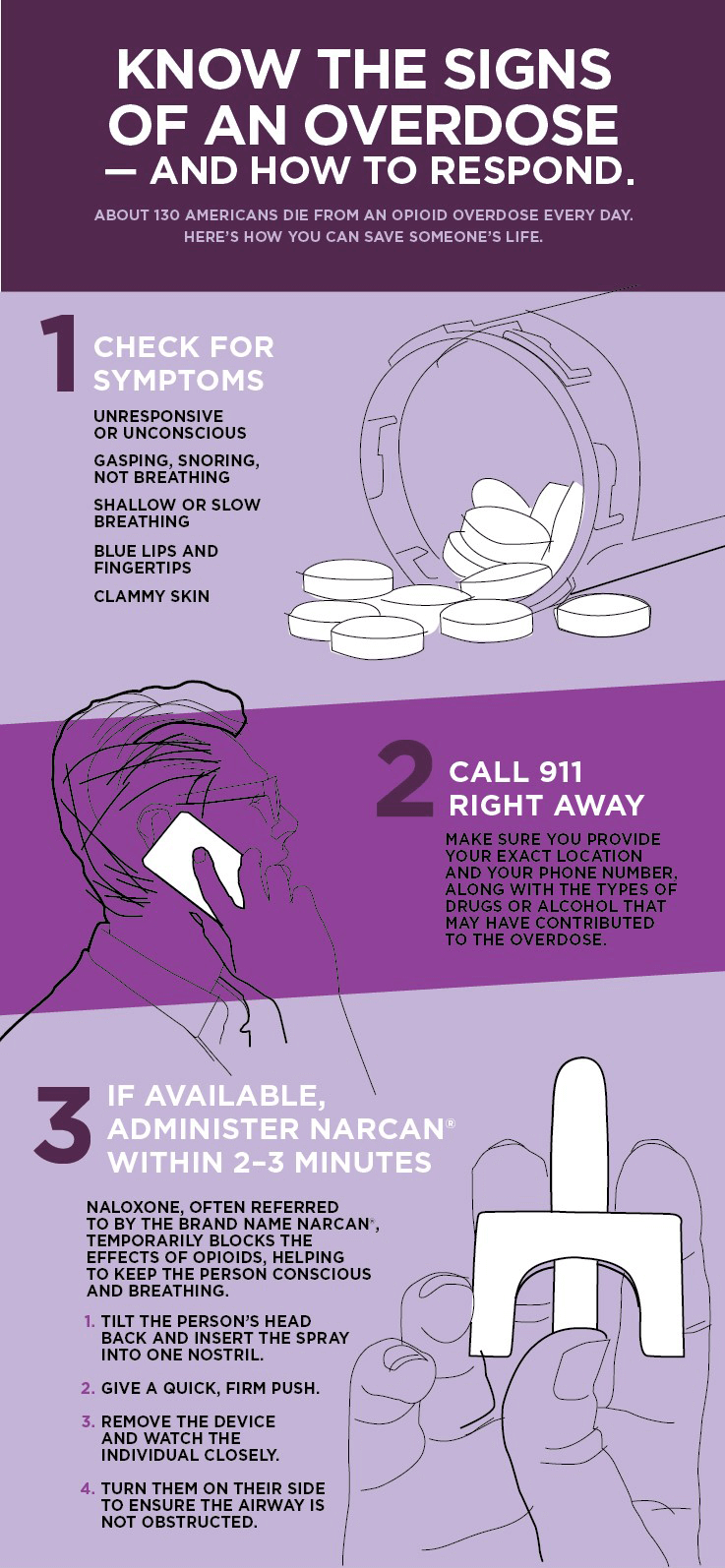- Have any questions?
- 412-123-4567
- noreply@upmc.com
What Do You Do if Someone Is Overdosing?

What Do You Do if Someone Is Overdosing?
An opioid overdose can happen if a person has overloaded their body with medications or illicit drugs, or a combination of opioids and other medications, drugs, or alcohol. Every day, approximately 130 people die from an opioid overdose in the United States.
While there are substantial efforts to address opioid addiction, it is important to understand what to do if you witness an opioid overdose.
1. Look for Symptoms
Here are some of the most common symptoms of an overdose:
- Unresponsive or unconscious
- Gasping, snoring, or no breathing at all
- Shallow or slow breathing
- Blue lips and blue fingertips
- Clammy skin
2. Call 911
If you suspect someone has overdosed, call 911 immediately and try to help the person onto his or her side to prevent choking.
Key information to share with 911 after requesting an ambulance:
- Your exact location
- Your phone number so they can call you back if the call drops, along with any visible drugs or alcohol that may be contributing to the overdose
Note that most states have enacted Good Samaritan laws, which may offer protection for those who report an overdose in good faith, even if criminal activity is involved. These laws encourage members of the community, family members, and friends to call 911 in the event of witnessing an overdose.

3. Administer Naloxone
Naloxone is a drug that temporarily stops the effects of opioids – reversing the overdose - and is only effective if there are opioids present in the body. There are four forms of naloxone:
- Intramuscular
- Injectable syringe
- Auto-injector
- Intranasal
- Intranasal atomizer kit
- Pre-packaged nasal spray (Narcan®)
Naloxone blocks the effects of opioids in the brain. This allows the individual to remain conscious and breathe normally.
In the event of an overdose, naloxone should be administered as soon as possible, ideally within two to three minutes if available.
Emergency personnel, a family member, friend, or stranger can administer naloxone.
4. Stay With The Individual Until Emergency Responders Arrive
If naloxone is not available, you can still support the individual until first responders arrive, including:
- Moving the person onto his or her side to prevent choking
- Performing chest compressions if they are not breathing and there is no pulse
More Information on Opioid Addiction, Overdoses, and Naloxone
- If you are someone you know is suffering from a substance abuse disorder, please call the Get Help Now Hotline at 1-800-662-HELP (4357) for more information about treatment resources.
- To learn more about UPMC’s programs, contact the UPMC Center for Opioid Recovery or UPMC Addiction Medicine Services.
- More information on naloxone can also be found on the Allegheny County website.
Sources: https://www.drugabuse.gov/drugs-abuse/opioids/opioid-overdose-crisis



